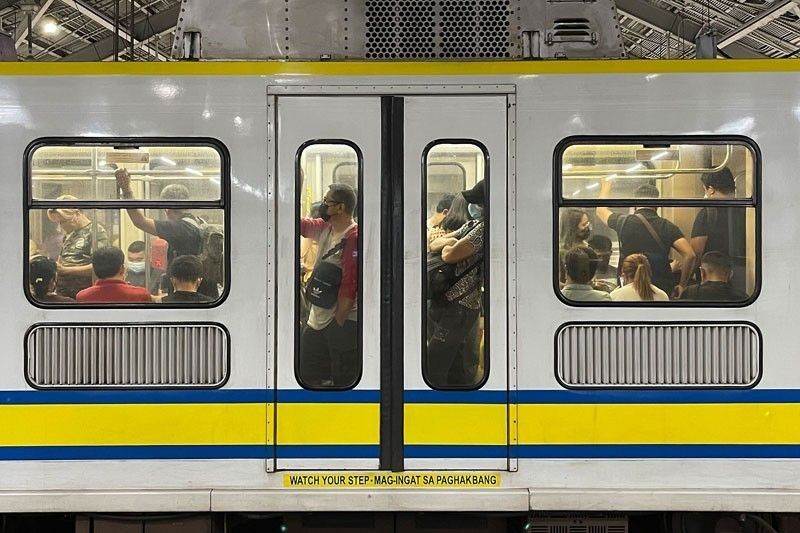Senators want more railways, but transport crisis doesn't end — or start — there, expert says

MANILA, Philippines — Amid Metro Manila’s commuter crisis, legislators are looking at more rail lines to “move more people instead of cars,” but transport experts and advocates said rail lines aren’t the only way to do that — especially in the middle of a crisis.
In a privilege speech earlier this week, Sen. JV Ejercito said that the railway system in the country has the potential to serve as the “backbone of the economy.”
“On the ground, this means long lines in terminals, congested roads. The Filipino commuters suffer the consequences of an inefficient transport system,” Ejercito said as he went on to the economic developments the proposal could bring.
Ejercito cited the latest Global Competitiveness Report, which said that the Philippines ranked 102nd out of 141 countries in terms of transport infrastructure. The same report also saw Philippines with the lowest rated railway service in Asia, ranking 86th out of 101 countries.
He went on to claim that a “Luzon Growth Triangle” connecting Subic, Manila, and Batangas can promote the development of the Clark International Airport and transform Luzon into an “investment magnet.”
Senators support rail, sustainability measures
Other senators backed the need to invest in more railways, including Senate President Migz Zubiri and Sens. Grace Poe, Pia Cayetano and Risa Hontiveros.
Senate President Pro Tempore Loren Legarda, Majority Floor Leader Joel Villanueva, and Senators Bong Revilla, Mark Villar, and Robinhood Padilla also supported Ejercito’s speech.
The latter two also questioned why the previous administration went with China as its partner when Japan had a significantly lower interest rate of 0.1% compared to China’s 3%.
Sen. Mark Villar, former public works and highways secretary, defended the decision. Villar’s previous department was primary implementing agency of the Duterte administration’s flagship Build, Build, Build program,
As it currently stands, ongoing railway projects in Luzon that were leftovers from the previous administration include the Light Rail Transit-1 Cavite Extension; Metro Rail Transit 7; Metro Manila Subway Project; and North-South Commuter Railway, which includes the Philippine National Railway Clark Phase 1, PNR Clark Phase 2, PNR Calamba, and PNR Bicol.
Transport expert: ‘Balanced’ investment needed to address commuter crisis
In an interview with Philstar.com though, transport economist Robert Siy, co-convenor of the Move as One transport coalition said that while rail projects are welcome, it failed to address the other aspects of the commuter experience in Metro Manila.
“It's still one of the mainstream travel modes, and it's one way we can upgrade our mass transit, [but at] the same time, I would say we need to do much more…it cannot be the only solution,” he said in a Zoom call.
“Every Filipino for example, is also a pedestrian…most of the people using rail still have to get to the railway stations and usually that means taking some form of road-based public transport or also walking or cycling to the station. [So] we need to look at what we call active transport infrastructure. And this is something where it was only during the pandemic, that we were able to kick off.”
In an informal online survey, commuter advocacy network The Passenger Forum found that 60% of respondents use multiple transport modes while 88% wanted the government to focus on interconnectivity of various transport modes and routes.
The Passenger Forum’s survey results also suggest that the top five transport modes are traditional jeepneys (52%), buses (29%), trains (18%), UV Express (11%), and modern jeepneys (10%).
Siy reasoned that most rail projects would take years to finish. He pointed to the long delays in the Metro Rail Transit-Line 7 connecting Bulacan to Quezon City whose first phase was supposed to open by September 2020.
“We should rate success and rate performance based on how the commuter experience is improving…if we pay attention, those performance indicators, we might come up with a different set of interventions, instead of focusing on very big, long gestation projects, we might have a different mix.”
“I would say these railway projects are still valuable and much needed. At the same time, we need to think, how can we increase and improve the availability of our different travel options? So [those are] buses jeepneys, and walking and cycling, if we can make an improvement in these travel modes, it will have a more direct impact on the everyday commuter.”
- Latest
- Trending































